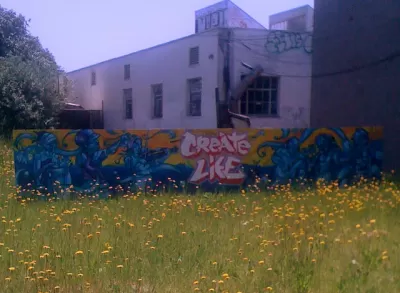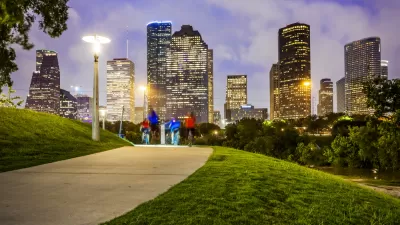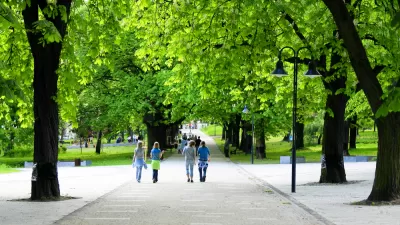A new book argues in favor of spontaneous, informal natural spaces.

Bloomberg CityLab's Linda Poon interviews Matthew Gandy, author of Natura Urbana: Ecological Constellations in Urban Space. The book "explores the longstanding cultural and scientific fascination" with "the 'unintentional nature' that springs up in urban spaces and is often neglected by humans." Inspired by an "accidental garden" that sprung up in a bombed-out lot in his inner London neighborhood, Gandy makes the argument that liminal, marginal, 'accidentally natural' spaces in cities "not only serve as mini laboratories for studying urban biodiversity, but can also reveal as much about a city’s history and political tensions as ruins, or the intentionally built environment."
Gandy also highlights the importance of nature in central cities as an equity issue:
Poor neighborhoods or ethnic minority neighborhoods in cities are often much more poorly served by access to parks and public space than richer neighborhoods. And for people of color, some parks and public spaces do not feel very safe or welcoming, and often this is even more the case if people travel outside of cities to rural or non-metropolitan spaces of nature. Therefore, urban nature in the heart of the city is much more open to a diverse public.
A critical analysis of the human-nature relationship is urgently needed, says Gandy. "[S]ince more than half the global population now live in cities, if we don’t have a better relationship with and understanding of urban nature, how will we build different responses to environmental questions more generally?"
FULL STORY: The Case for Preserving Spontaneous Nature in Cities

Alabama: Trump Terminates Settlements for Black Communities Harmed By Raw Sewage
Trump deemed the landmark civil rights agreement “illegal DEI and environmental justice policy.”

Planetizen Federal Action Tracker
A weekly monitor of how Trump’s orders and actions are impacting planners and planning in America.

The 120 Year Old Tiny Home Villages That Sheltered San Francisco’s Earthquake Refugees
More than a century ago, San Francisco mobilized to house thousands of residents displaced by the 1906 earthquake. Could their strategy offer a model for the present?

Ken Jennings Launches Transit Web Series
The Jeopardy champ wants you to ride public transit.

BLM To Rescind Public Lands Rule
The change will downgrade conservation, once again putting federal land at risk for mining and other extractive uses.

Indy Neighborhood Group Builds Temporary Multi-Use Path
Community members, aided in part by funding from the city, repurposed a vehicle lane to create a protected bike and pedestrian path for the summer season.
Urban Design for Planners 1: Software Tools
This six-course series explores essential urban design concepts using open source software and equips planners with the tools they need to participate fully in the urban design process.
Planning for Universal Design
Learn the tools for implementing Universal Design in planning regulations.
Clanton & Associates, Inc.
Jessamine County Fiscal Court
Institute for Housing and Urban Development Studies (IHS)
City of Grandview
Harvard GSD Executive Education
Toledo-Lucas County Plan Commissions
Salt Lake City
NYU Wagner Graduate School of Public Service





























